Reviews
Charles Band
USA, 1985
Credits
Review by David Carter
Posted on 07 August 2010
Source Full Moon Entertainment DVD
Categories Favorites: Time Travel
As a writer and producer, Charles Band is responsible for many of the most beloved cult films of the seventies, eighties, and nineties. He had a hand in the creation of such titles as Re-animator, Tourist Trap, Laserblast, and The Ghoulies, but Band is perhaps better known for the direct-to-video films he made with his Full Moon Productions, no fewer than fifteen of which involve murderous puppets (The Puppet Master franchise), dolls (Dolls, Blood Dolls, and Dollman), or toys (Demonic Toys). Band is far less prolific as a director, however, only having made a handful of films and only one of any note—Trancers. But this film, starring comedian-turned-actor Tim Thomerson and a pre-fame Helen Hunt, is nonetheless one of the most original low budget science-fiction films of the eighties, displaying one of the more inventive time travel scenarios of any such film.
Thomerson’s Jack Deth is a trooper in 23rd century “Angel City,” built on the parts of Los Angeles not submerged by a cataclysmic earthquake centuries prior. Angel City’s main threat, Martin Whistler, was killed by Deth almost a year before the beginning of Trancers, and Deth has spent the intervening time ridding the galaxy of the few remaining “trancers,” Whistler’s psychic slaves. Deth’s fellow troopers feel he’s overestimating the threat that trancers currently present but his diligence is proven to be justified once it is revealed that Whistler is still alive and targeting the Council, the ruling body of Angel City. Whistler’s plan involves traveling back in time to 1985 Los Angeles to kill the Council’s ancestors, leaving a power vacuum in Angel City that he and his trancers will fill. They disapprove of his methods, but the Council has no choice but to send Jack Deth to 1985 to protect their ancestors and return Whistler to the 23rd century.
Deth needs assistance navigating 20th century Los Angeles, so he enlists the help of punk rocker Lena as his guide. She believes none of Deth’s bizarre claims about his mission but becomes quickly convinced once she witnesses a confrontation between Whistler and Deth. They fail to stop the first Council ancestor from meeting his fate at the hands of the trancers and find that locating the second ancestor, a now homeless former baseball star, is extremely difficult. They so manage to find the man only minutes before Whistler, setting up a final confrontation between Deth and Whistler where Deth will have to decide between staying with his new love Lena or ending Whistler’s reign of terror permanently.
Within this somewhat predictable framework, Trancers contains a device unique among time travel cinema, referred to here as “travelling on the line.” By using an unspecified intravenous drug, an individual’s consciousness can be sent into the body of a biological ancestor at some point in the past. Drug-induced time travel is a rich metaphor that Trancers unfortunately does nothing with, but it does explore this idea of becoming one’s own ancestor. Jack enters the body of Phil Deth, a lothario photographer who, thankfully, is physically identical to Jack in every way. Though it isn’t explained where Phil’s consciousness goes, Jack is in complete control of his new body after taking the drug; when Jack is present, Phil is absent and vice versa. Trancers admirably avoids delving into “fish out of water” comedy to stay focused on its plot, and the only aspect of 20th century life that Deth appears to be unfamiliar with are televised reruns of Mike Hammer movies.
There is evidence in the film to suggest that this form of time travel and the “trance” are interconnected. Both are forms of consciousness sharing, as the trancers operate as a type of hive-mind led by Whistler and, indeed, he appears to be the first person to travel successfully on the line or at least the first to attempt to manipulate reality by doing so. As with its form of time travel, Trancers leaves the specifics of the trance state ambiguous. The sole clue given to its nature is that it only works on weak-minded people (called “squids” by Deth) and that it gives the tranced superhuman strength and aggression. Furthering this idea that time travel and trancing are related is the fact that the forces of good seem to be a step behind Whistler in the field of time-manipulation. Despite being able to synthesize their own version of the time travel drug, the Council is only able to send back small inanimate objects, including a “Long Second” watch, a device that temporarily slows time, giving Jack the ability to evade gunfire in a manner similar to what would be seen in The Matrix films some fourteen years later.
While Trancers avoids specificity with its time travel technology, it does offer concrete explanations on its theory of time travel. Time in Trancers is a single-stream; there are no alternate timelines. Additionally, events on the time stream are happening concurrently – manipulations in the past only affect future events that take place chronologically after the manipulator went down the line. This confusing concept is illustrated through the event that serves as the impetus for the Council sending Jack Deth into the past. Once the 1985 version of Whistler murdered one of the Council’s ancestors, that individual ceased to exist at the moment in time relative to Whistler’s trip into the past. That is to say, if Whistler killed the ancestor on his eighth day in the past, the Councilor died eight days after Whistler traveled back in time. Even though that individual’s ancestor dies many centuries prior to them being born, thus eliminating the chain of ancestors leading to their birth, they still existed and other people remember them.
In the Trancers theory of space-time, all events in time are happening concurrently and time travel is essentially the same as traveling through space. This concept renders the many paradoxes surrounding theoretical time travel moot. There are no butterfly effects or grandfather paradoxes in Trancers. In fact, the film even parodies the grandfather paradox by having Deth essentially become his own grandfather and subsequently choose to remain in the past as his own ancestor. The conception of time in the film is that it is an immutable force: things that have happened will happen at the appointed time regardless of changes in the past. It is a type of relativity not elucidated by any major time theorist – and one most likely an accidental product of narrative necessity — but an intriguing one nonetheless.
Insofar as Trancers adheres to a paradox-free theory of time travel, some rather glaring plot holes inadvertently arise. It is never explained why the Council simply wouldn’t send Deth farther into the past than 1985 to kill Whistler’s ancestor before he possesses him or why they wouldn’t send him into his own recent past to prevent Whistler’s trip down the line. And as confusing as Trancers becomes, subsequent entries into the franchise lack even the minimal clarity of the original film. The sequel sees the Council rescue Deth’s wife from being killed only to send her into the body of her 1991 ancestor, and the ensuing love triangle between Deth, his past wife, and his future wife overshadows the film’s thin plot about Whistler’s brother developing an army of drug-addicted trancers. In Trancers III the titular “trancers” are not Whistler’s psychic slaves but scientifically created super-soldiers, and the film has Jack bouncing from 1992 to 2247 to 2005 to fight them. The fourth and fifth entries see Deth accidentally sent into another dimension (but, importantly, not another time) where trancers bear no resemblance to the previous versions and take the form of vampires with magical powers. The sixth – and to date, final – Trancers film returned to the concept of the original with Deth travelling down the line into the body of his own daughter, Josephine.
Owing a debt to both Blade Runner and the original Terminator, Trancers belongs in that esteemed class of low budget films that rise above their influences and are often more entertaining than those films that they shamelessly emulate. Thomerson’s portrayal of Deth as a hardboiled but wisecracking cop is infinitely likeable and propels the film through spots where it would otherwise falter. Truly one of the great cult cinema performances of the eighties, Thomerson’s Deth not only minimizes Trancers’ flaws but even makes the sequels tolerable to a degree. Later films sullied its legacy a bit, but Trancers remains one of the better entries into the time travel film canon, if more for its originality than its execution.
More Favorites: Time Travel
-

Bill and Ted’s Excellent Adventure
1989 -
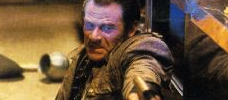
Trancers
1985 -

The Time Machine
1960 -

Groundhog Day
1993 -

Warlock
1989 -

The Navigator
1988 -
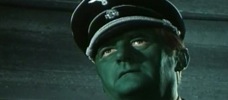
Tomorrow I’ll Wake Up and Scald Myself with Tea
1977 -

The Spirit of ‘76
1990 -

Flight of the Navigator
1986 -

La jetée
1962 -

Twelve Monkeys
1995 -

Beastmaster 2: Through the Portal of Time
1991 -

Peggy Sue Got Married
1986 -
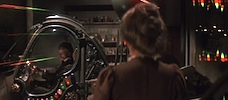
Time After Time
1979 -

Somewhere in Time
1980 -

Back to the Future
1985 -

Back to the Future Part II
1989 -

Back to the Future Part III
1990 -
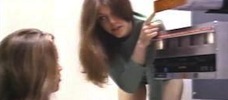
Idaho Transfer
1973 -
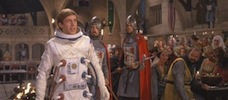
Unidentified Flying Oddball
1979 -

Slaughterhouse-Five
1972 -

The Lake House
2006 -

Time Bandits
1981 -

Doctor Who
1963–present -

Doctor Who
1963–present
We don’t do comments anymore, but you may contact us here or find us on Twitter or Facebook.



